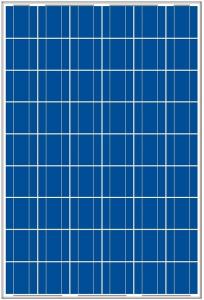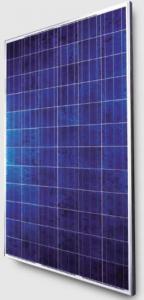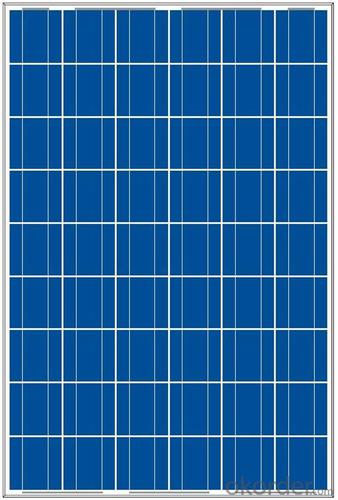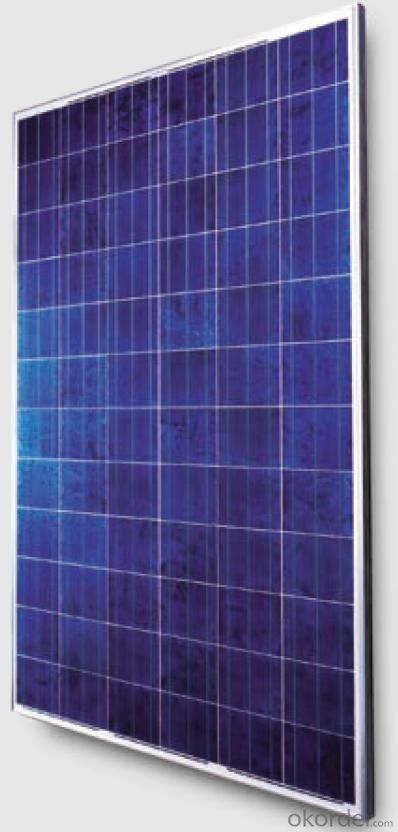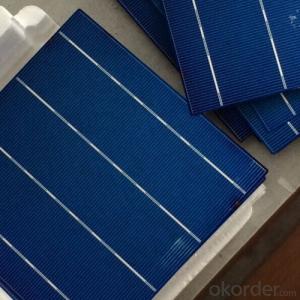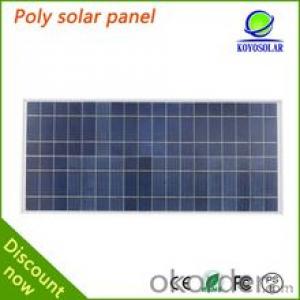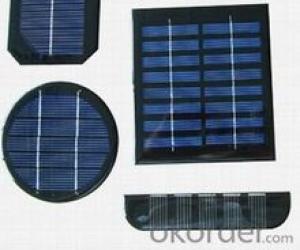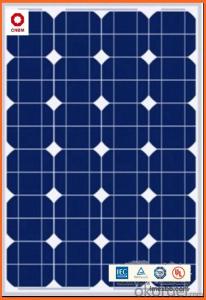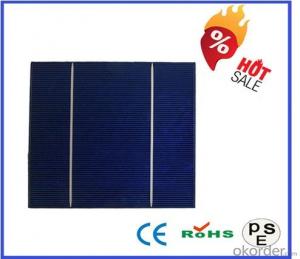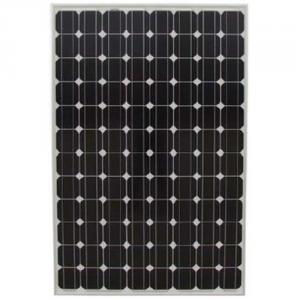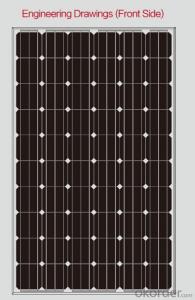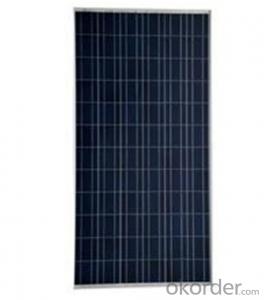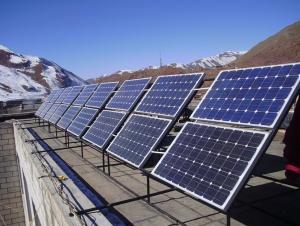High Efficiency TUV Rv Solar Cells Crystalline Silicon Solar Module
- Loading Port:
- China Main Port
- Payment Terms:
- TT or LC
- Min Order Qty:
- -
- Supply Capability:
- -
OKorder Service Pledge
OKorder Financial Service
You Might Also Like
Quick Details
| Quick Details | |||||
| Max. Power: | 1W to 300W | Surface Glass: | Tempered Glass | Model Number: | DBF, MBF |
| Frame: | Firm Aluminum | Warranty: | 25 years | Number of Cells: | 36 or 72 PCS |
| Packaging & Delivery | Glue: | EVA | Delivery Detail: | 15 days | |
| Packaging Detail: | Carton/Wooden Case/Pallet | Certificate: | TUV, CE | ||
Specifications
Mono and Poly Solar Module
1. CE, TUV, ISO
2. High efficiency and good warranty
3. Customized type 1W to 300W
4. OEM Service
We are professional manufacturer with ISO9001:2000 certificate for kinds of solar panels in China. Our main products include Crystalline Silicon solar panels, Amorphous Thin Film Silicon Solar panels, and BIPV products. Since 2001, we have been being in the sector of solar panels for 10 years. Our products are with high quality and at competitve price.
Our Advantages:
1) 10 years experience of solar module encapsulation.
2) 31MW solar module have been used in Chinese major grid-connected projects.
3) Be among the first Chinese enterprises to enter the Germany grid-connected market.
4) To build up a 1GW module encapsulation & integration capacity in 2015.
5) Own 45 patents and 3 module production bases in different cities.
We offer Polycrystalline Silicon and Monocrystalline Silicon Solar Module from 1W to 300W. Please feel free to advise us the size and specification you need.
Here is some information of our Crystalline Silicon Solar Panels for your reference.
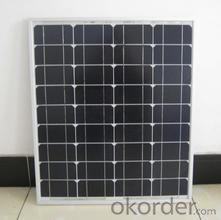
FAQ
We have organized several common questions for our clients,may help you sincerely:
①what price for each watt?
it depends on the quantity, delivery date and payment terms,
②what is your size for each module? can you tell me the parameter of your module?
we have different series of panels in different output, both c-si and a-si. please take the specification sheet for your reference.
③Can you provide the peripheral products of the solar panels, such as the battery, controller, and inverter? If so, can you tell me how do they match each other?
Yes, we can, we have two companies for solar region, one is CNBM International, the other is CNBM engineering Co.
We can provide you not only the solar module but also Solar Cells, the off grid solar system, we can also provide you service with on grid plant.
④What is your warranty system?
Our product performance guarantees for 25 years
• 12 years guarantee for workmanship
• Timeliness of delivery
• Quality Products certified (TÜV, UL, CE, ISO)
⑤How do you pack your products?
We have rich experience on how to pack the panels to make sure the safety on shipment when it arrives at the destination.
⑥ Can you do OEM for us?
Yes, we can.
⑦How long can we receive the product after purchase?
In the purchase of product within three working days, We will arrange the factory delivery as soon as possible. The pecific time of receiving is related to the state and position of customers. Commonly 7 to 10 working days can be served.
- Q: How do solar cells perform in areas with high levels of air pollutants?
- Solar cells can be negatively affected by high levels of air pollutants. The pollutants, such as smog and particulate matter, can reduce the amount of sunlight reaching the solar cells and lead to a decrease in their efficiency. Additionally, pollutants can accumulate on the surface of the solar panels, further reducing their performance. Regular cleaning and maintenance of the solar cells can mitigate some of these effects, but in areas with persistently high levels of air pollutants, the overall performance of solar cells may be compromised.
- Q: Can solar cells be used for off-grid power supply?
- Yes, solar cells can be used for off-grid power supply. Solar cells, also known as photovoltaic cells, convert sunlight directly into electricity. This makes them an excellent choice for powering off-grid locations where access to traditional power sources may be limited or unavailable. Solar panels can be installed in remote areas to generate electricity, providing a sustainable and renewable energy solution for off-grid power supply.
- Q: Can solar cells be used in electric fences?
- Yes, solar cells can be used in electric fences. Solar cells can convert sunlight into electricity, which can power the electric fence energizer. This eliminates the need for a constant power supply or batteries, making it a sustainable and cost-effective option for powering electric fences.
- Q: Can solar cells be installed on any type of roof?
- Yes, solar cells can be installed on any type of roof, including flat, sloped, metal, tile, and asphalt roofs. However, the suitability and feasibility of installation may vary depending on factors such as roof orientation, shading, structural integrity, and local regulations. It is recommended to consult with a professional solar installer to determine the best options for your specific roof type.
- Q: Can solar cells be used in powering autonomous vehicles?
- Yes, solar cells can be used to power autonomous vehicles. Solar panels can be installed on the exterior or integrated into the body of the vehicle to capture sunlight and convert it into electricity. This renewable energy source can help supplement the vehicle's power needs, extending its range and reducing its reliance on fossil fuels. Additionally, advancements in solar technology and efficiency are making it more feasible to use solar power as a primary or secondary energy source for autonomous vehicles.
- Q: What is the usage of solar cells?
- Solar cells can be used in many different places, such as the power supply factories.
- Q: What are the safety considerations when installing solar cells?
- Some key safety considerations when installing solar cells include ensuring proper electrical grounding and wiring to prevent electrical hazards, following relevant building codes and regulations, using appropriate personal protective equipment (PPE) such as gloves and safety goggles, and taking precautions to avoid falls or injuries while working at heights. It is also important to carefully handle and dispose of any hazardous materials used in the installation process, such as chemicals or heavy metals found in certain types of solar panels.
- Q: What is the average cost of a solar cell?
- The average cost of a solar cell can vary depending on factors such as the type and size of the cell, the manufacturer, and the region. However, as of 2021, the average cost ranges from $0.20 to $0.80 per watt for photovoltaic solar cells.
- Q: Can solar cells be used in farming or agriculture?
- Yes, solar cells can be used in farming or agriculture. They can be used to power various agricultural processes such as irrigation systems, lighting, and machinery. Additionally, solar panels can be installed on rooftops or in fields to generate electricity, reducing reliance on the grid and providing a sustainable energy source for farming operations.
- Q: What is the impact of snowmelt on solar cell efficiency?
- The impact of snowmelt on solar cell efficiency is generally positive. When snow covers solar panels, it reduces their ability to generate electricity due to the lack of sunlight reaching the cells. However, as the snow melts and slides off the panels, it allows for maximum exposure to sunlight, thus improving the efficiency and energy production of the solar cells.
Send your message to us
High Efficiency TUV Rv Solar Cells Crystalline Silicon Solar Module
- Loading Port:
- China Main Port
- Payment Terms:
- TT or LC
- Min Order Qty:
- -
- Supply Capability:
- -
OKorder Service Pledge
OKorder Financial Service
Similar products
Hot products
Hot Searches
Related keywords
